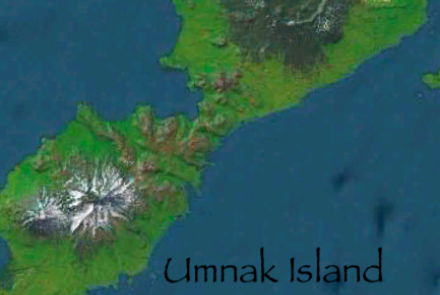Blowing in the Wind
The dunes were hazy under the sun. Sand grains, knocked loose by the rising wind, bounced up the long, shallow windward slopes, then plunged over the sandy crests to slide down the steeper slipfaces in the lee of the dunes. Smaller grains of dust, knocked loose by the bouncing sand, were swirled into the air, joining dust already picked up from the sun-dried bars and islands of the half-dry stream. The air darkened as the dust load increased, and the little family of horses, nervous at the increasing wind and darkness, left their grazing on the windswept knoll and moved down into the sparse growth of willows at the bottom of a small gully. A herd of bison found similar shelter, but the mammoths continued to feed on the increasingly dusty vegetation.
Dust sifted down in the sheltered areas, working its way through the blades of grass, sedge, and sage to the surface. In a beheaded gully where thunderstorm waters no longer eroded the dust away as fast as it built up, a willow thrust out roots from what had been its trunk. Other willows, near the mouth of a more active gully, were racing to outgrow not only the dust sifting from the sky, but that washed from higher up the slopes as well. On the active bars of the great river, swollen by the meltwater from a dozen retreating glaciers and choked by the silt, sand, and gravel those glaciers had plucked and carried from the mountain peaks, even the willows could not survive.
Aeolian sediments -- those carried and deposited by wind -- are widespread in Alaska. In a few places -- the Kobuk dunes, the Matanuska Valley, the Delta and Nenana rivers -- sand is moving and dust is being picked up and deposited today. These, however, are a tiny fraction of the total area covered by loess -- windblown dust -- and sand.
Most aeolian sediments in Alaska are vegetated and nearly inactive today. But there are vast areas of old, vegetated sand dunes south of the Tanana River, stretching from Nenana west to beyond the junction with the Yukon River. Other dunes, some of which can be seen in road cuts, are near Northway. The Ikpikpuk dunes, the largest known dune field in Alaska, covers the Arctic Slope from the Colville to the Ikpikpuk River. Many other dune fields are found on the North Slope and in and south of the Brooks Range. Loess is even more widespread. Farther south, both vegetated dunes and loess are well known in the Copper, Susitna, and Matanuska valleys, as well as much of the plain of the Kenai Peninsula and the low land around Bristol Bay. Even in Southeastern, where the dense vegetation protects the soil from the wind, there are loess deposits near braided rivers.
The landscape was probably almost treeless when most of our aeolian sediments were sifting down from the sky. The material was picked up by the wind from the bars and shores of the great braided rivers draining the vast glaciers that mantled the Alaska, Coast, and Brooks ranges during the Ice Age. Like the Delta River of today, these active rivers shifted their channels so often that no plants could grow on the bars long enough to anchor the shifting sand and dust.
In some areas, great gullies were cut into the loess accumulations. Gullies generally mean a lack of vegetation to hold the soil, which suggests a generally dry climate, together with rains that come rarely but hard -- thunderstorm rains. We are still far from certain, however, whether the gullies were cut as the loess was being deposited or afterwards, in a different climatic regime, though the latter seems most likely.
Loesses in other countries -- Czechoslovakia twenty years ago, and mainland China now -- have yielded valuable information on past climates. Could Alaskan deposits do the same?



